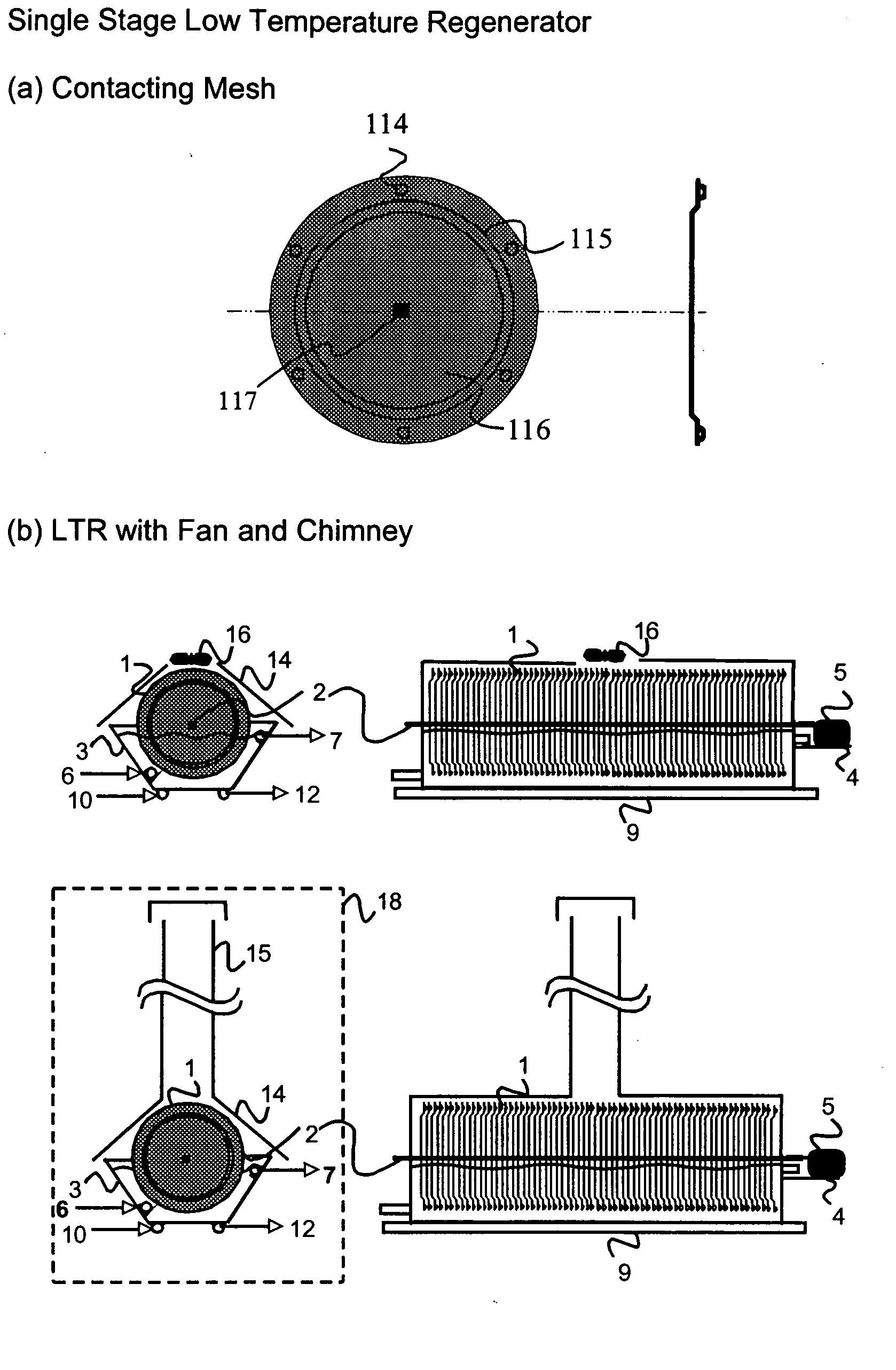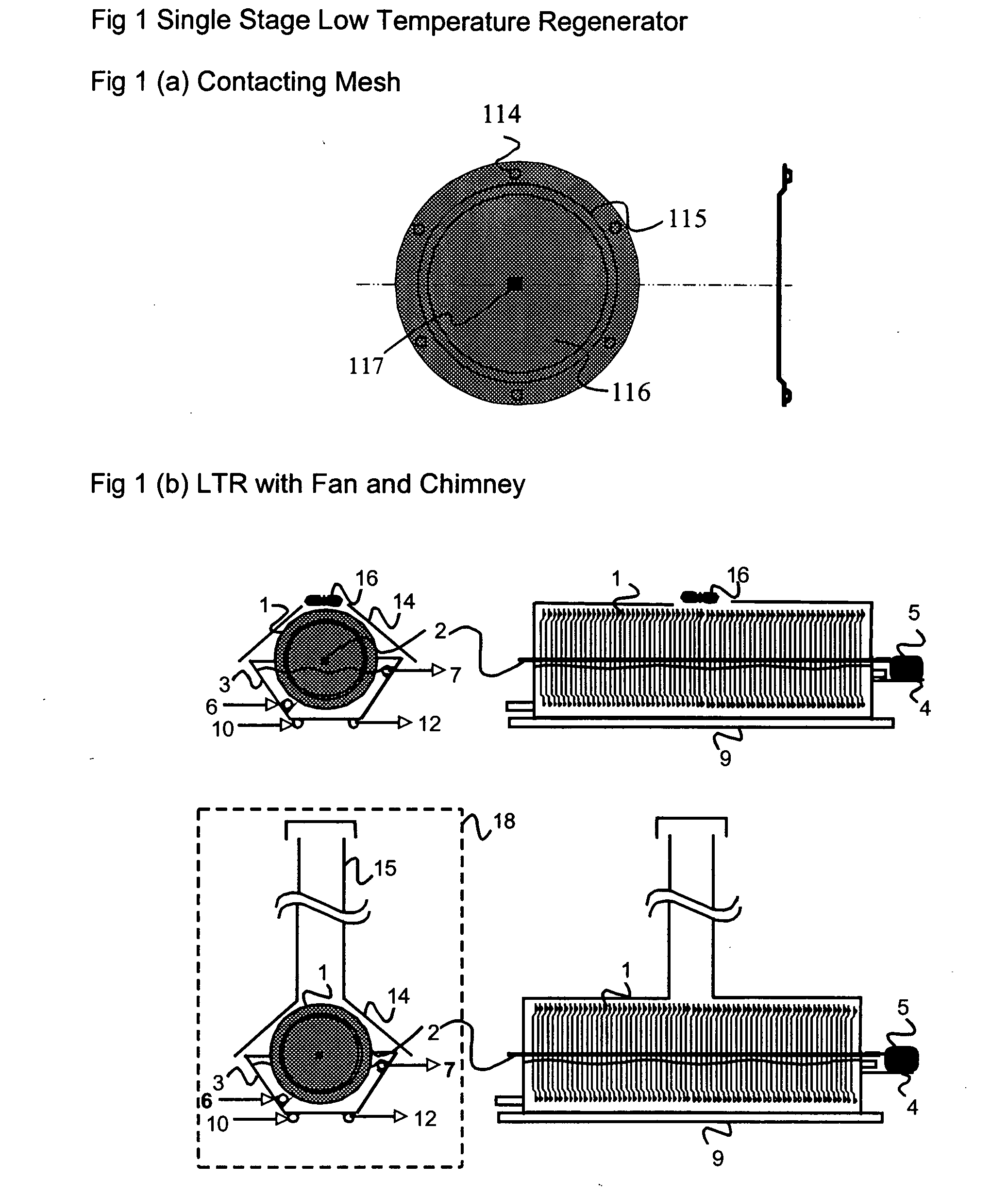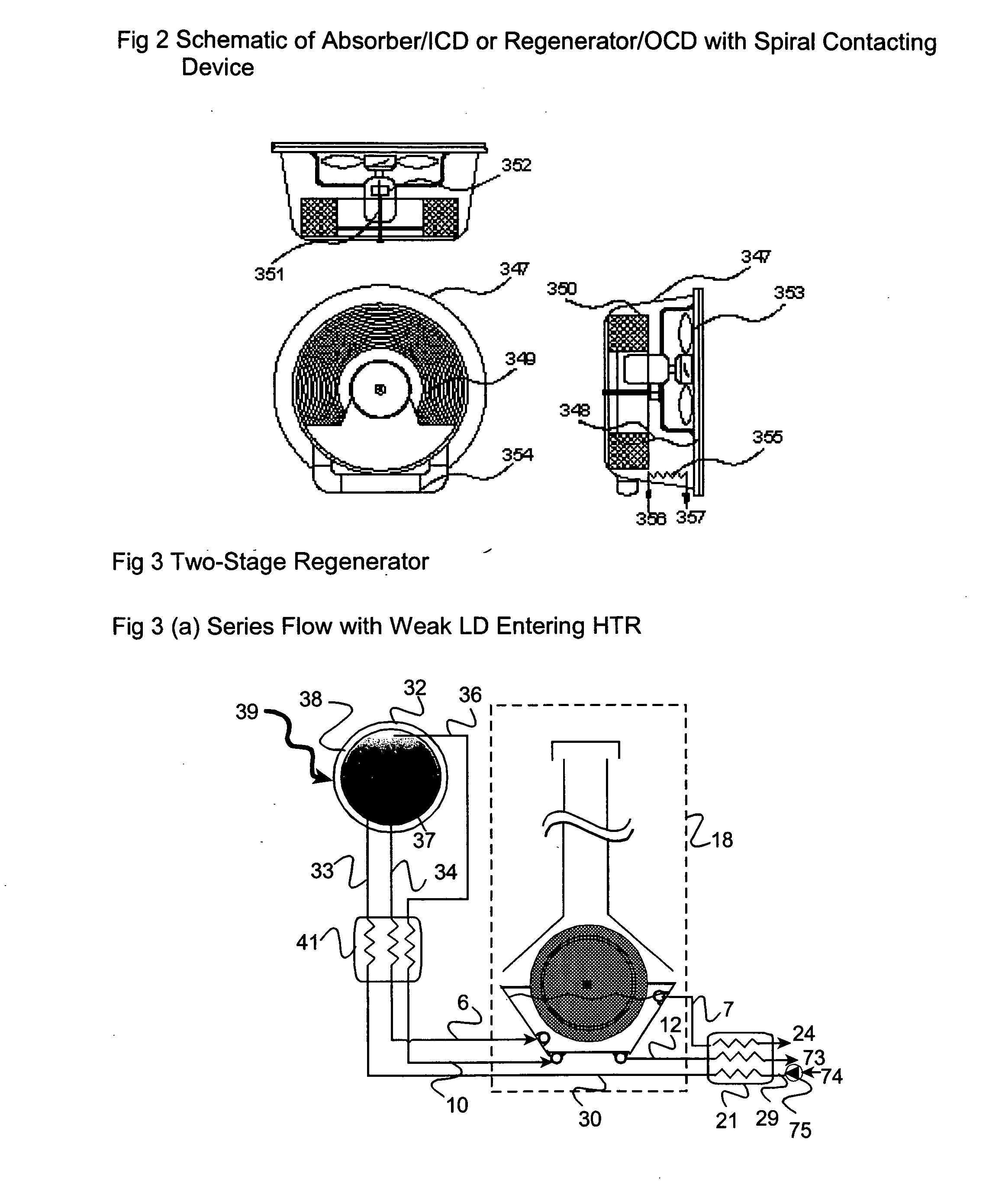Energy efficient sorption processes and systems
a technology of energy-efficient sorption and process, applied in the direction of solar heat devices, lighting and heating apparatus, furnace types, etc., can solve the problems of reducing the efficacy of regeneration process, ld transport along with air stream, etc., to increase heat and/or mass transfer, increase interfacial area, and reduce temperature
- Summary
- Abstract
- Description
- Claims
- Application Information
AI Technical Summary
Benefits of technology
Problems solved by technology
Method used
Image
Examples
example 1
[0347] A two-stage regenerator device was fabricated and tested for regeneration of calcium chloride LD. It comprises a HTR made of aluminium rectangular channel in which electrical heaters are incorporated as heat source. LTR incorporates the aluminium disks are of 150 mm diameter, with circumferential lip and dimples as the contacting device between LD and ambient air. The disks are mounted on an aluminium shaft of diameter 9.5 mm. The disks are placed in a semi hexagonal aluminium trough 500 mm (length)×200 mm (width)×210 mm (height). It incorporates 337 m2 / m3 surface density, when maintaining 5 mm gap between the disks using plastic spacers. Contacting device is covered with a hood and a chimney of diameter 100 mm, length 1.5 m. Airflow through the contacting device is due to natural convection induced by the chimney effect. The disks are made to rotate at 5 rpm using an electric motor. Inlet and out let of LD to the trough is through 9.5 mm diameter aluminium tubes. The experim...
example 2
Humidification of Air Using Contacting Device
[0350] The contacting device was fabricated and tested for humidification of ambient air. It comprises discs made of aluminium mesh. The discs are of 150 mm diameter, with circumferential lip and dimples. The discs are mounted on an aluminium shaft of diameter 9.5 mm. The discs are placed in a semi hexagonal aluminium trough 500 mm (length)×200 mm (width)×210 mm (height). It incorporates 337 m2 / m3 surface density, when maintaining 5 mm gap between the discs using plastic spacers. Contacting device is covered with a hood and a chimney of diameter 100 mm, length 1.5 m. Airflow through the contacting device is due to natural convection induced by the chimney effect. The discs are made to rotate at 5 rpm using an electric motor. Inlet and out let of water to the trough is through 9.5 mm diameter aluminium tubes. The experimental result in Table 2 shows that the contacting device efficiency for humidification of air is as high as 98% for the ...
example 3
Results of CaCl2 Using Hybrid Cooling System
[0351] A hybrid cooling system is designed with the following specification:
a.Evaporator duty3.52kW (1 TR)b.CaCl2 solution temperaturesi.Condenser inlet45.9°C.ii.Condenser outlet49°C.iii.Evaporator inlet24.1°C.iv.Evaporator outlet20°C.c.Evaporator exit superheat5°C.d.Condenser exit sub-cooling0°C.e.Condenser temperature51°C.f.Evaporator temperature15°C.g.Compressor isentropic efficiency80%h.Hermetic compressor motor efficiency84%i.Ratio of clearance to swept volume5%
[0352] The salient features of the model are as follows: [0353] a. The model is developed for the design of a HCS with single stage VCRS [0354] b. A liquid-vapour heat exchanger / refrigerant sub-cooler may be incorporated on the refrigerant side to further improve the capacity and COP of the HCS. [0355] c. A liquid-liquid heat exchanger / solution heat exchanger is also designed on CaCl2 solution streamside for energy saving and for enhancing the overall system COP and capacity...
PUM
 Login to View More
Login to View More Abstract
Description
Claims
Application Information
 Login to View More
Login to View More - R&D
- Intellectual Property
- Life Sciences
- Materials
- Tech Scout
- Unparalleled Data Quality
- Higher Quality Content
- 60% Fewer Hallucinations
Browse by: Latest US Patents, China's latest patents, Technical Efficacy Thesaurus, Application Domain, Technology Topic, Popular Technical Reports.
© 2025 PatSnap. All rights reserved.Legal|Privacy policy|Modern Slavery Act Transparency Statement|Sitemap|About US| Contact US: help@patsnap.com



